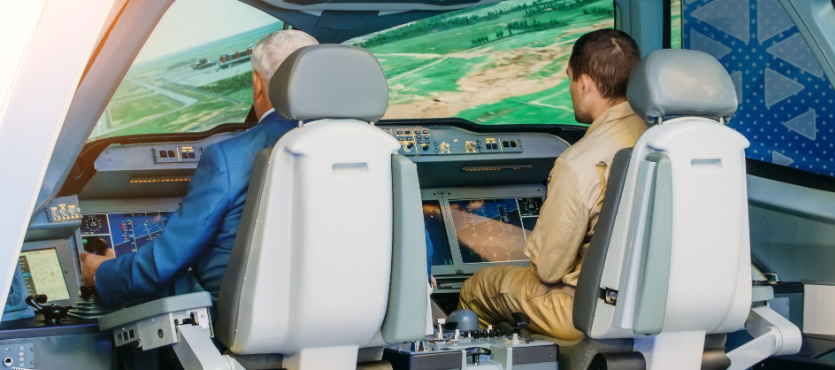Simulator training is an essential component of pilot education, offering a safe and effective means of building and maintaining flying skills. It enhances safety, reduces training costs, and prepares pilots for a wide range of real-world scenarios they may encounter during their careers.
If you are curious about simulator training and its role in the academic journey of students, you are in the right place. Today we are going to discuss the goals, key aspects, and benefits of simulator training at a glance.
The Goal of Simulator Training
The primary goal of simulator training in flight training is to provide aspiring pilots with a safe, controlled, and highly realistic environment to acquire, practice, and refine their aviation skills.
- Skill Development: Simulators allow students to develop and improve their flying skills without the inherent risks associated with real flight. They can practice maneuvers, procedures, and emergency responses in a controlled setting.
- Safety: Safety is paramount in aviation. Simulator training provides a risk-free environment for trainees to make mistakes, learn from them, and enhance their abilities without jeopardizing their safety or the safety of others.
- Emergency Procedures: Simulators are invaluable for teaching and practicing emergency procedures, including engine failures, instrument failures, fires, and more. Pilots can become proficient in handling these situations without the actual danger.
- Scenario Replication: Simulators can replicate a wide range of real-world scenarios, including various weather conditions, airport environments, and air traffic situations. This enables students to gain experience in different situations they might encounter in their aviation careers.
Types of Simulators
- Full-Motion Simulators: These simulators provide a realistic flight experience, including motion and vibration. They are often used for advanced training and airline pilot certification.
- Fixed-Base Simulators: These simulators don’t move but provide a high-fidelity cockpit experience, including realistic controls, visuals, and instruments.
- Flight Training Devices (FTD): FTDs are less complex than full-motion simulators but offer a cost-effective means of practicing basic flying skills.
- Desktop Simulators: These are computer programs or apps that students can use for practice on personal computers. They are more common for basic flight training.
Key Aspects of Simulator Training for Students
Simulator training is typically integrated into the overall flight training curriculum, complementing real flight hours. Students often progress from basic flight training devices to more advanced simulators as they gain experience. Simulators are instrumental in teaching students how to respond to various emergency scenarios, such as engine failures, system malfunctions, and in-flight emergencies. Pilots can practice these critical procedures without the inherent risks of real flight.
Simulator training enables students to become proficient in instrument flying, including reading and interpreting flight instruments, navigating without visual references (instrument flight rules, or IFR), and conducting precision approaches. They also help students develop navigation skills, including using GPS, VORs (VHF Omnidirectional Range), and other navigation aids. It also emphasizes effective radio communication with air traffic control.
Simulator sessions provide the opportunity to become familiar with the layout and operation of various aircraft types and their respective cockpits. This is particularly valuable for transitioning to different aircraft models. In a nutshell, by offering a risk-free training environment, simulators help mitigate the inherent risks associated with real flight training. This is especially important during the early stages of pilot training.
Train With The Best
If you are curious about what simulator training programs entail, an expert from Airlink Flight School might be in a better position to guide you. Whether you’d like to learn more about simulators or flight training in general, one of our faculty members would be more than happy to assist you in gaining that knowledge. Get in touch with us today to learn more about our school and training programs.

